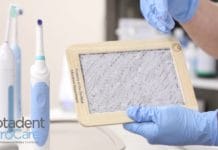Many studies have been conducted on how systemic diseases can increase the risk of dental disease, and research has been conducted on how poor oral health can be linked to systemic disease. It isn’t easy combining the efforts of the medical and dental communities. The Assessment of Oral Health and Healthy Habits in Adult Patients with Congenital Hemophilia highlights the dental problems caused by hemophilia.
In this study, 77 adults with hemophilia were compared to a control group of 50 adults without the disease in order to compare their average level of dental hygiene. The results found were contrary to previous studies done in the past.
So, what do we know about this disease? Have you ever treated a patient who had hemophilia? Would you know exactly how to treat and provide oral home care to a patient with a bleeding disorder?
What Is Congenital Hemophilia?
Congenital hemophilia is a hereditary disease that causes a deficiency in the blood’s clotting abilities. “The disease is characterized by excessive, prolonged, or spontaneous bleeding or bleeding after invasive procedures, even after minor surgical procedures such as dental extractions, even in patients with mild forms of the disease. Bleeds occur, among others, in the joints and muscles (especially in the severe form of hemophilia), the central nervous system, the genitourinary system, or the digestive system. Patients with hemophilia report the presence of hematomas, as well as prolonged bleeding after minor cuts or injuries. Bleeding may also occur in the oral cavity—for example, spontaneous bleeding from the gums or excessive or prolonged bleeding after dental procedures.” A person with this disorder can bleed internally after a fall and suffer from serious pain, general weakness, and eventual death without intervention.
Unless they share that information with us, we won’t know if they have the disease. Hygienists know that one of the first signs of infection is bleeding, so we may assume excessive bleeding upon probing or scaling is due to infection and nothing more. This leaves us unprepared for emergencies and unaware of the need for alternative treatments or precautions that may need to be taken.
Needs in Dental Care
An average of 70% of hemophiliacs suffer from caries, making these patients more prone to the disease than our other patients without a bleeding disorder. They are known to suffer from a higher level of anxiety before any visit to the dental office or may avoid dental treatment altogether, possibly due to the fear of excess bleeding. Restorative treatment must be handled delicately. Their dental treatments may have to be broken up into several visits to complete what could ordinarily be completed in one appointment.
DMFT indices were much higher in hemophiliac patients, despite where they fell on the deficiency in clotting factors scale. On the other hand, OHI-s values remained balanced between the two groups involved in the study, reflecting the findings of some previous studies from different parts of the world. This was the only study done where all the study participants with hemophilia were adults who have lived with this disease their entire lives.
Due to higher caries risk, fluoride varnish treatment, sealants, and prescription strength fluoride toothpaste are recommended.
Even in patients with hemophilia, healthy gingiva should not bleed – bleeding is a sign of disease. If bleeding while treating a patient with hemophilia (or if the patient experiences bleeding during home care) lasts for over 20 minutes, they should contact their hematologist.
Mouthguards while playing sports are essential for all, but especially for those with hemophilia.
Further dental treatment recommendations from the World Federation of Hemophilia include, but are not limited to (verbatim):
- Deep injections, surgical procedures – particularly those involving bone (extractions, dental implants) – and regional local anesthetic blocks should be avoided, where possible, as they may start a bleeding crisis.
- Comprehensive dental assessment is needed at the age of about 12 or 13 to plan for the future and to decide how best to forestall difficulties resulting from overcrowding or misplaced third molars or other teeth.
- For people with mild or moderate hemophilia, non-surgical dental treatment can be carried out under antifibrinolytic cover, but a hematologist must be consulted before other procedures are done.
- For people with mild hemophilia A (factor VIII >10%) and most people with VWD (type 1), scaling and some minor surgery may be possible under desmopressin (DDAVP) cover. However, DDAVP is not effective in hemophilia B (even mild cases) as it does not boost factor IX levels.
- For those with severe hemophilia, factor replacement is necessary before scaling, surgery or regional block injections. For example, a dose of 50 international units per kilogram of body weight (IU/kg) of factor VIII is desirable before a tooth extraction in a person with hemophilia A; in hemophilia B, a dose of 100 IU/kg of factor IX is required.
- Local use of fibrin glue and swish-and-swallow rinses of tranexamic acid before and after dental extractions are safe and cost-effective methods to help control bleeding.
- Tranexamic acid used topically significantly reduces bleeding following dental treatment. A mouth rinse of 10 mL of a 5% solution used for two minutes, four times daily for seven days, is recommended. It may be used in combination with oral tranexamic acid tablets for up to five days.
- Bleeding can be aggravated by painkillers (analgesics) such as Aspirin® and other nonsteroidal anti-inflammatory drugs such as indometacin. Codeine and paracetamol (acetominophen) are safer alternative analgesics.
Dental Home Care
The researchers discovered that a person with hemophilia may be so scared of hurting themselves that they may not brush and clean interdentally properly. Their level of oral hygiene can be lower than someone without the disease, but with proper care, it doesn’t have to be. The researchers state, “Contact with a professional dental hygienist at the earliest possible stage of life seems imperative to develop the appropriate hygiene habits related to the oral cavity.”
Education on the importance of excellent home care should be given – brushing at least twice per day with fluoridated toothpaste, daily interdental cleaning, and using an antiseptic mouth rinse, if appropriate. Home care instruction should include proper brushing technique (i.e., Bass technique) with a soft or super soft brush, not “scrubbing” aggressively with heavy pressure, cleaning interdentally with proper technique (especially if using string floss so as not to cause floss trauma), and offering other home care aids like interdental brushes. Electric toothbrushes can be recommended too.
Nutritional counseling, focusing on limiting fermentable carbohydrates and not snacking frequently, is recommended. It isn’t necessarily the amount of sugar eaten at one time but the frequency of exposure that increases the risk for decay.
Smoking cessation education should be given if the patient uses tobacco.
The World Federation of Hemophilia states that even in patients with hemophilia, healthy gingiva should not bleed – bleeding is a sign of disease. “The only time some bleeding might occur is if you are overly aggressive with the toothbrush when brushing.”
In Closing
Our patients with a bleeding disorder of any kind have a higher risk of caries, and if an infection is present, heavy bleeding may occur. Patients with hemophilia can have longer healing times. The blood may not be able to clot or clot quickly if bleeding occurs, and infections may occur.
It’s essential to encourage thorough dental care at home by showing them how much pressure is safe when brushing their teeth and the proper technique. We can show them how to clean interdentally safely. We can help decrease their anxiety and live a better quality of life with targeted and individualized oral care education and encouragement while keeping them safe in our care.











